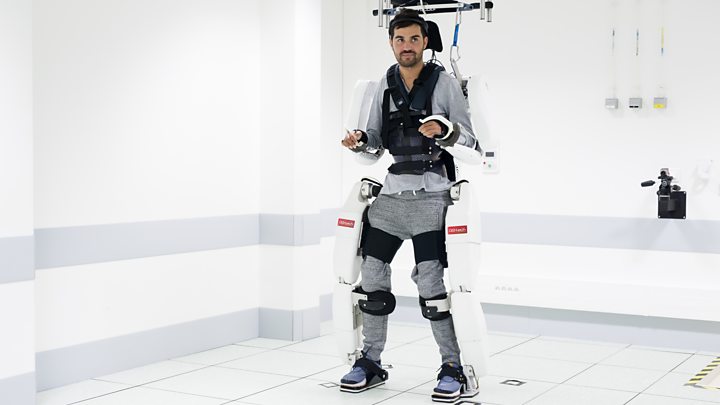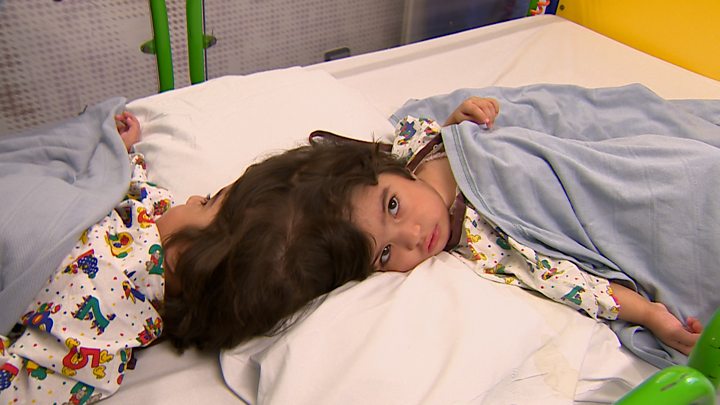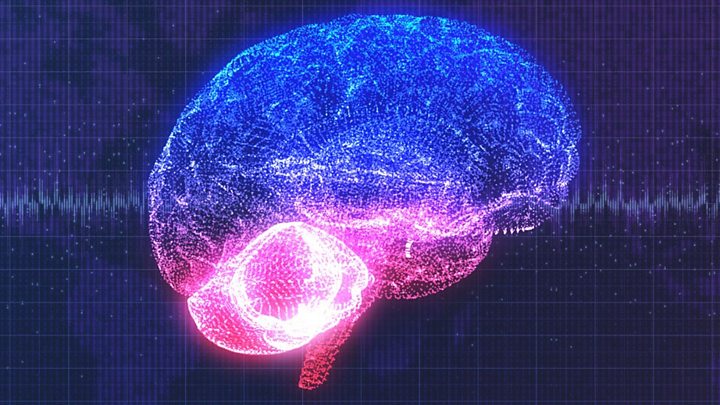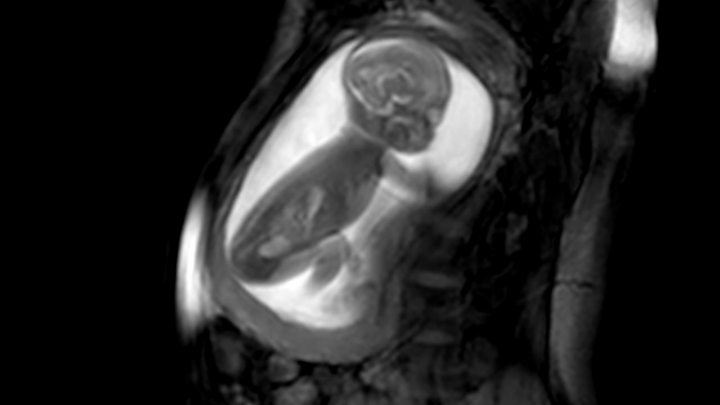It has been a remarkable year of promise in medical science - from inventing ways of treating the untreatable to reversing paralysis and keeping the brain alive after death.
"It was like [being the] first man on the Moon," said 30-year-old Thibault.
He was describing the moment he was able to take his first steps since being paralysed in a fall two years ago.
He can now move all four of his paralysed limbs with a mind-controlled exoskeleton suit.
His movements, particularly walking, are far from perfect and the robo-suit is being used only in the lab.
But researchers say the approach could one day improve patients' quality of life.

Media playback is unsupported on your device
Meanwhile, nerves inside paralysed people's bodies have been "rewired" to give movement to their arms and hands.
Patients in Australia can now feed themselves, put on make-up, turn a key, handle money and type at a computer.
A unique drug made for just one girl with unprecedented speed
Mila Makovec's doctors have performed a seemingly impossible feat - a girl with a deadly brain disease has been given a unique drug that was invented from scratch just for her and all in less than a year.
She was diagnosed with fatal and untreatable Batten disease.
The eight-year-old's medical team in Boston performed whole-genome sequencing - a detailed interrogation - on Mila's DNA, her genetic code, and uncovered a unique mutation that was causing her disease.
Having seen the fault, the researchers thought it might be possible to treat it.
They designed a drug, tested it on Mila's cells and on animals in the laboratory and won approval to use it from the US Food and Drug Administration.
Drugs normally take about a decade and a half to get from the laboratory, go through clinical trials and get to patients.
The US team got there in a year.
Mila is now having far fewer seizures, although she is not cured.
Gene-silencing drugs arrive
A new class of medicine - called gene silencing - has shown its ability to reverse previously untreatable diseases.
A gene is part of our DNA that contains the blueprint for making proteins, such as hormones, enzymes or raw building materials.
But our DNA is locked away inside a cell's nucleus and kept apart from a cell's protein-making factories.
So our bodies use a short strand of genetic code, called messenger RNA, to bridge the gap and carry the instructions.
Gene-silencing drugs kill the messenger.
Sue Burrell no longer has bouts of severe pain caused by her acute intermittent porphyria.
And Vincent and Neil Nicholas are both taking gene silencing medicines for a disease called amyloidosis.
Viruses to the rescue
Isabelle Carnell Holdaway's life was saved by an experimental cocktail of viruses.
The teenager's body was being attacked by deadly and seemingly untreatable bacteria and she was given less than a 1% chance of survival.
She had big, black, festering lesions forming on her skin where the infection was taking hold.
And she ended up in intensive care when her liver started failing, with large colonies of bacteria forming in her body.
But doctors at Great Ormond Street Hospital attempted an untested "phage therapy", which uses viruses to infect and kill bacteria.
Phage-therapy never became mainstream medicine and the field was eclipsed by the discovery of antibiotics, which are much easier to use.
But now phage-therapy is having a resurgence due to the rise of superbugs that are resistant to antibiotics.
Isabelle's case could be the first of many.
A new approach to cancer
Charlotte Stevenson, a two-year-old from Belfast, was one of the first patients to benefit from a "revolutionary" new class of cancer drugs.
Tumour-agnostic drugs do not care where the cancer is growing in the body as long as it has a specific genetic abnormality inside.
The first, called larotrectinib, has been approved for use across Europe.
It is designed to target tumours with a genetic abnormality known as an NTRK gene fusion.
They can be found in Charlotte's sarcoma as well as some brain, kidney, thyroid and other cancers.
Meanwhile...
Cancer immunotherapy has reached a huge milestone.
The medicine uses a patient's own immune system to fight cancer and is a story we have followed closely.
Now more than half of patients are surviving a deadly skin cancer (melanoma) that was considered untreatable just a decade ago.
Ten years ago just one in 20 patients would live for five years after being diagnosed with late-stage melanoma. Most would die in months.
It has been an extraordinary and rapid transformation in care.
A first drug to slow dementia?
A US pharmaceutical company says it has developed the first drug to slow Alzheimer's disease.
The drug, called aducanumab, is an antibody that clears toxic proteins that build up in the brain.
The announcement in October was a massive surprise, as the firm Biogen had written off the drug in only March this year.
Then it reviewed the evidence to show that those taking the highest dose did benefit and retained more memory and language ability and were better at day-to-day tasks such as cleaning, shopping and doing laundry.
If the drug is approved, which is not guaranteed, it would be one of the most significant moments in modern medicine.
A new type of dementia
Meanwhile, experts think they have found a new form of dementia and millions may have been wrongly diagnosed.
Dementia is a symptom found in many diseases of the brain and memory loss is the most common feature.
Alzheimer's disease is the most common form of dementia and others include vascular dementia, dementia with Lewy bodies, fronto-temporal dementia, Parkinson's disease dementia, amyotrophic lateral sclerosis.
Now "limbic-predominant age-related TDP-43 encephalopathy" or more simply "Late" has been added to the list.
Separating twins

Media playback is unsupported on your device
One of our most followed stories of the year was the separation of two conjoined twins.
Safa and Marwa were born joined at the skull and they had never been able to see each other's faces.
There are no official figures for how often this happens, but one estimate says craniopagus conjoined twins are born once in every 2.5 million births.
Most do not live longer than a day.
To separate them required multiple surgeries, months of hard work and the expertise of hundreds of hospital workers.
Pig brains partially revived four hours after death
The line between life and death became fuzzy in 2019.
Pig brains were partially revived four hours after the animals were slaughtered.
The study showed the death of brain cells could be halted and that some connections in the brain were restored.
The feat was performed by rhythmically pumping a synthetic blood around the decapitated brains.
The surprise findings challenge the idea that the brain goes into irreversible decline within minutes of the blood supply being cut off and could lead to new treatments for brain damage and disorders.
However, there were no signals from the brain that would indicate awareness or consciousness.
A new tool to manipulate DNA
A new way of editing the code of life could correct 89% of the errors in DNA that cause disease.
The technology, called prime editing, has been described as a "genetic word processor" able to accurately re-write the genetic code.
It is a bit like pressing Ctrl-F to find the bit of text you want to change, then pressing Ctrl-C and Ctrl-V to copy over the new text (or the command key if you're a Mac user).
There are some 75,000 different mutations that can cause disease in people and the researchers say prime editing can fix nearly nine in 10 of them.
It has already been used to correct damaging mutations in the lab, including those that cause sickle cell anaemia and Tay-Sachs disease (a rare and fatal nerve condition).
Giving people a voice again
Scientists have developed a brain implant that can read people's minds and turn their thoughts to speech.
First an electrode is implanted in the brain to pick up the electrical signals that manoeuvre the lips, tongue, voice box and jaw.
Then powerful computing is used to simulate how the movements in the mouth and throat would form different sounds.
This results in synthesised speech coming out of a "virtual vocal tract".
It is not perfect.
If you listen to this recording of synthesised speech:

Media playback is unsupported on your device
You can tell it is not crystal clear (the recording says "the proof you are seeking is not available in books").
The team at the University of California, San Francisco says the technology could help people when disease robs them of their ability to talk.
E cigarettes do help smokers quit
Vaping has been under intense scrutiny this year.
More than 2,400 people have needed hospital treatment, and there have been 50 deaths, in the US from "e-cigarette or vaping product use-associated lung injury".
Meanwhile, a teenage boy nearly died after vaping caused a catastrophic reaction in his lungs.
But experts have continued to stress vaping is safer than smoking tobacco and this year came proof that vaping helps smokers quit.
A trial, in the New England Journal of Medicine, found 18% of smokers who used them to quit remained smoke-free after a year, compared with 9.9% of those using traditional nicotine-replacements.
Other things that caught our eye:

Media playback is unsupported on your device
* Researchers have produced unprecedented images of a baby's heart while it is still inside the womb.
* Measles has a devastating impact on the body's immune system that could make it harder to fight infections for years.
* The origins of the eating disorder anorexia nervosa are in both the mind and the body, with changes hardwired into some people's DNA altering the way they processed fats and sugars.
* The ultimate limit of human endurance has been worked out by scientists analysing a 3,000-mile run, the Tour de France and other elite events.
* A diet rich in bananas, chickpeas and peanuts can boost good gut bacteria to help malnourished children grow.
* People keep making new brain cells throughout their lives (well at least until the age of 97), according to a study on human brains.
* A "pumping" patch containing millions of living, beating stem cells could help repair the damage caused by a heart attack.
* A fungus - genetically enhanced to produce spider toxin - can rapidly kill huge numbers of the mosquitoes that spread malaria.
* Supercooling human livers to -4C triples the time they can be kept before transplant compared with putting them on ice.
* It may not come as a surprise, but the food we eat is putting 11 million of us into an early grave each year.
* Scientists have taken cancer apart piece by piece to reveal its weaknesses, and come up with new ideas for treatment.
* Nearly everyone can lower their risk of dementia by up to a third, even if it runs in the family, by living a healthy lifestyle.
Follow James on Twitter.
from Hacker News https://ift.tt/39rGkhu
No comments:
Post a Comment
Note: Only a member of this blog may post a comment.